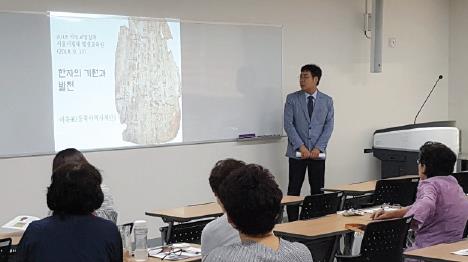
NAHF News
On October 19, 2018, the Northeast Asian History Foundation held an international conference at its grand conference hall under the theme "Studying China's Globalization Strategies: The One Belt, One Road Initiative and Conflicts and Cooperation in East Asia."
Present at the conference were Professor Zheng Yongnian (鄭永年) of the East Asian Institute at the National University of Singapore, five Chinese experts including Professor Luo Jianbo (羅建波) serving as director of the Research Office for China’s Foreign Affairs within the Central Party School's Institute of International Strategic Studies, Professor Abanti Bhattachary from the University of Delhi, Professor Sandip Kumar Mishra from the Jawaharlal Nehru University, and Professor Do Tien Sam, the former director of the Vietnam Academy of Social Sciences' Institute of Chinese Studies. The experts exchanged their various opinions about the light and shade of China's One Belt, One Road initiative and the possible implications it may have on the Korean peninsula and Asia. The Foundation plans to take what was discussed at the conference to conduct further research on China's globalization strategies and publish the findings in book form by the first half of 2019.